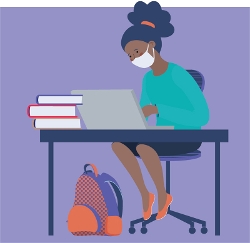States Issuing School Reopening Guidelines, But Districts Will Decide the Details
Back to school will look different at individual schools across the country. Here are guidelines issued by educational organizations and individual states. Where will libraries fit into the plans?
 What will the 2020-21 school year look like? Nobody knows. It's all a work-in-progress, but states are announcing plans for reopening schools, and it is clear there will be no “return to normal” this fall.
What will the 2020-21 school year look like? Nobody knows. It's all a work-in-progress, but states are announcing plans for reopening schools, and it is clear there will be no “return to normal” this fall.
Logistics will be an enormous challenge, especially in larger districts, and there will be criticism and concern no matter the rules for returning to school after the pandemic forced closures across the country.
Using state guidelines, the details will be decided district by district, or in some situations, school by school. Plans must be made with consideration of the number of students and the physical layout of the school building. Social distancing, as well as masks or some kind of face covering, must be adopted by staff and students of a certain age in most states that have revealed their plans. There will be heightened cleaning and limited large-group activities such as assemblies or field trips. Bussing is an issue, with proper social distancing not possible in most situations.
READ: CDC Releases School Reopening Guidelines
Some of the reopening models include a hybrid schedule that brings alternating groups of students into classrooms for in-person classes, while the others have remote learning during that time. Students stay in their “cohort” and cannot eat or socialize with students in a different group. With these options, staff and access to technology and internet service will continue to be issues.
 |
maine.gov.edu |
In Montana, returning to school will be a phased process, limiting the number of people in the buildings at first. Metropolitan Nashville Public Schools is asking parents to choose in-person or online learning for their children for the fall. In Colorado, which expects schools to implement a hybrid model, the state’s department of education applied for a grant to fund online learning collectives that would create groups of students, educators, outside educational providers, and community organizations to better support student academic needs.
Despite the continued uncertainty, administrators and educators must plan. Below are guidelines from states and organizations. The National Education Association released a guide to safely reopening schools, as did the American Federation of Teachers. Released state reopening guidelines: Alabama; Alaska; Arizona; Arkansas; California; Colorado; Connecticut; Florida; Georgia; Hawaii; Illinois; Indiana; Louisiana; Maine; Maryland; Massachusetts; Minnesota; Montana; Nebraska; New Jersey; New Mexico; North Carolina; Oklahoma; Oregon; Pennsylvania; Rhode Island; Tennessee; Utah; Vermont; Virginia; Washington; West Virginia; Wisconsin.
Has your district or school offered any details for the fall? How is the library incorporated into those plans? Please let us know in the comments section below or via email.
RELATED
The job outlook in 2030: Librarians will be in demand
The job outlook in 2030: Librarians will be in demand
ALREADY A SUBSCRIBER? LOG IN
We are currently offering this content for free. Sign up now to activate your personal profile, where you can save articles for future viewing






Add Comment :-
Be the first reader to comment.
Comment Policy:
Comment should not be empty !!!